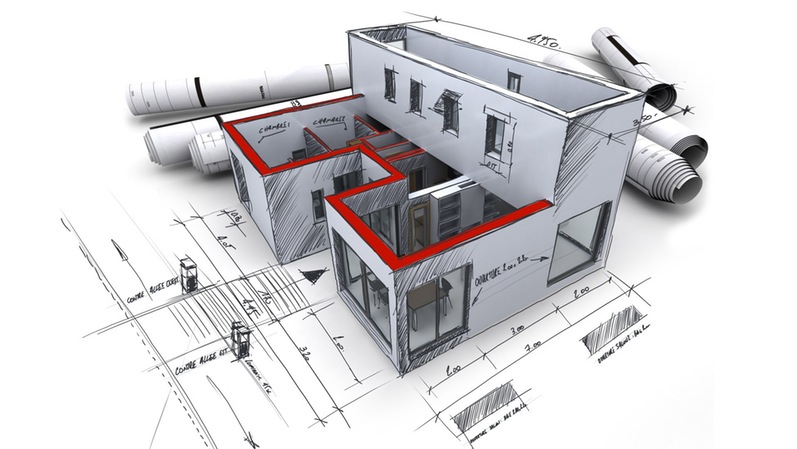An Extensive Summary of Architectural Styles and Their Influence on Modern City Planning and Development
Architectural designs have actually long offered as a mirror to the social values and technological improvements of their time, playing a crucial role in forming modern city preparation and advancement. From the grandeur of Neoclassicism to the practical approach of Brutalism, each design has presented special ideas that influence urban aesthetics and capability.
Historic Overview of Building Styles
Throughout background, building styles have evolved in feedback to cultural, technical, and environmental elements. Each duration reflects the prevailing worths, beliefs, and improvements of its time, leading to a rich tapestry of layout that indicates human imagination and adaptation. The old civilizations, such as the Egyptians and Greeks, developed foundational styles that stressed balance and percentage, serving both practical and visual purposes.
As societies transitioned with the Center Ages, Gothic style emerged, characterized by its verticality and detailed outlining, mirroring the spiritual ambitions of the era. The Renaissance marked a resurgence of timeless suitables, combining art and design in ingenious manner ins which influenced succeeding styles across Europe.
The Industrial Transformation presented new products and building and construction methods, triggering activities like Innovation, which tested traditional forms and embraced simpleness and capability. The 20th century saw a diversity of styles, with Postmodernism responding against the plain minimalism of its predecessor, integrating historic recommendations and diverse elements.
Today, building styles remain to progress, driven by globalization and sustainability worries, showing a vibrant interaction in between heritage and technology. This historic introduction highlights the relevance of architecture as a mirror of societal evolution and as a driver for city growth.
Secret Architectural Styles Explained
The variety of architectural styles reflects the myriad influences that shape our built atmosphere, each personifying unique features and social relevances. Secret architectural styles consist of Classical, Gothic, Baroque, Modernism, and Postmodernism, each representing distinct historical contexts and aesthetic philosophies.
Classic design, rooted in ancient Greece and Rome, stresses balance, proportion, and the usage of columns. On the other hand, Gothic design, flourishing in the center Ages, is defined by sharp arcs, ribbed safes, and flying buttresses, developing an angelic high quality in sanctuaries. Baroque design, emerging in the 17th century, is marked by splendour, intricate decoration, and a dynamic interaction of light and shadow.

Recognizing these designs gives understanding right into the cultural stories and technological improvements of Bonuses their respective ages, highlighting how style serves not equally as a sanctuary, yet as a representation of social values and desires.
Influence On Urban Planning
In shaping the advancement of cities, architectural styles considerably affect urban preparation choices. The choice of architectural design commonly dictates the appearances, capability, and total character of metropolitan settings.
Furthermore, architectural styles can affect zoning regulations and land utilize plans. Urban organizers should think about the dominating architectural patterns when designing areas, guaranteeing that brand-new developments balance with existing frameworks. This consideration fosters natural urban landscapes and enhances neighborhood identification.
The implementation of specific building styles can also affect socioeconomic variables within a city. High-end contemporary designs may draw in affluent locals and businesses, leading to gentrification, while a lot more economical housing remedies could focus on sensible and lasting styles to accommodate varied populaces. Inevitably, the interplay in between building styles and metropolitan preparation develops dynamic cities that show both historical context and contemporary demands, shaping the lived experiences of their citizens.
Sustainability and Modern Architecture
Architectural designs play a critical role in dealing with contemporary challenges, specifically in the world of sustainability. As city locations increase and ecological issues magnify, modern architecture significantly welcomes sustainable design concepts that focus on power efficiency, source conservation, and minimal eco-friendly effect.
Contemporary architectural movements, such as biophilic style and eco-friendly style, supporter for frameworks that harmonize with their surroundings, using natural products and advertising biodiversity - cda architects. These styles frequently incorporate sustainable energy resources, such as solar panels and wind generators, to reduce dependence on nonrenewable fuel sources and reduced carbon impacts
Furthermore, the integration of sophisticated innovations, such as smart structure systems, enhances energy management, enhancing resource usage while making certain passenger convenience. Ingenious water administration strategies, consisting of rain harvesting and greywater recycling, further add to sustainable urban environments.
Especially, sustainability expands beyond ecological problems; it incorporates social and economic dimensions. By promoting neighborhood health and advertising inclusivity, contemporary architectural designs align with lasting growth goals. As read this article a result, the development of building methods remains to form resistant cities that not just satisfy the needs of today yet additionally safeguard the future for generations to come.
Neighborhood Involvement in Layout
Community engagement in design functions as a critical bridge in between engineers and the populaces they offer, ensuring that the built environment mirrors the demands and desires of its customers. This joint procedure welcomes neighborhood participants to add their understandings and choices, promoting a sense of ownership and responsibility toward the spaces they live in.
Efficient community interaction uses different methods, such as workshops, studies, and public forums, to collect varied viewpoints (cda architects). These strategies facilitate a two-way dialogue, allowing architects to understand regional contexts while empowering locals to Recommended Site articulate their concerns and desires. This inclusivity not only improves the design quality but likewise promotes social equity by dealing with the unique challenges dealt with by marginalized groups

Final Thought
Architectural styles have profoundly affected modern city planning and development, showing evolving cultural and technical contexts. The integration of historic aesthetics with modern demands promotes city settings that prioritize sustainability and neighborhood interaction. As cities continue to grow and adapt, the continuous discussion between architectural heritage and modern-day style concepts will certainly continue to be vital in producing comprehensive, dynamic spaces that enhance lifestyle and advertise social equity. The future of city development hinges on this unified equilibrium.
Comments on “Leading Reasons to Choose CDA Architects for Your Residential or Commercial Layouts”